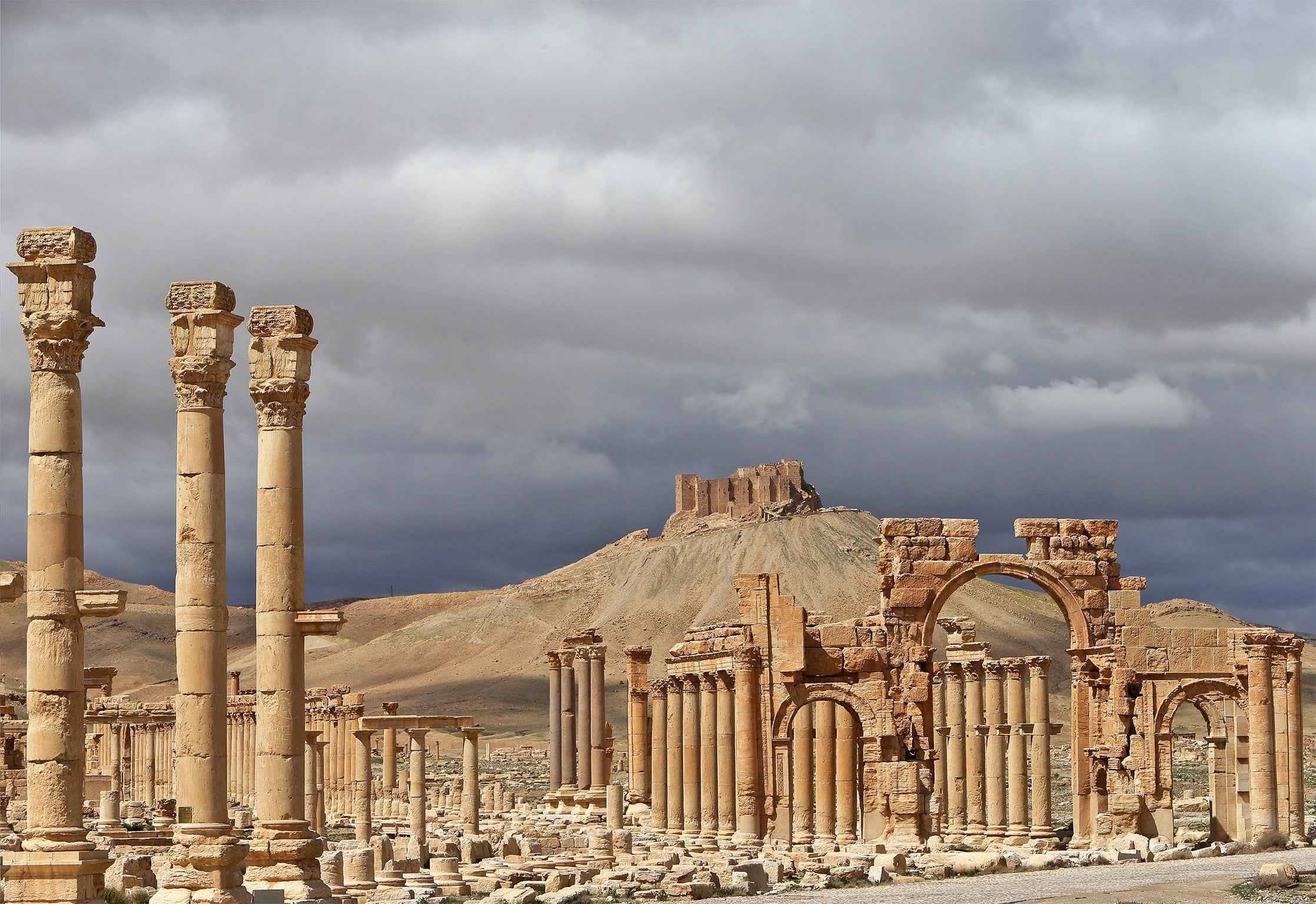Palmyra will be flattened by Isis within six months, warns antiquities director
Professor Maamoun Abdulkarim describes himself as world's 'saddest director of antiquities' as he pleads for foreign aid

Syria’s chief “Monuments Man” has warned that the ancient city of Palmyra will be flattened within six months if the international community fails to act.
Describing himself as the “saddest director of antiquities in the world”, Professor Maamoun Abdulkarim, director-general of antiquities and museums for Syria, is visiting the UK for the first time to talk about the country’s battle to protect its rich cultural heritage. It is the first of a series of World Monuments Fund talks at the Royal Geographical Society.
“I am the saddest director-general in the world,” Professor Abdulkarim told The Independent. “I want to appeal to the international community to be with us, to support us. Do not leave Syrian archaeologists to fight this cultural battle alone. We need you.”
He added: “If things continue as they are, Palmyra will be completely destroyed. I am sure of it. We must give it freedom, or we will lose an icon. It is the work of politicians and strategists of what to do.”
Palmyra once welcomed hundreds of thousands of visitors a year to its monumental ruins but has been “taken hostage” by Isis, Professor Abdulkarim said before adding a network of academics dubbed the new “Monuments Men” – a reference to the soldiers who protected cultural heritage in the Second World War – were risking their lives to protect Syria’s heritage. “We don’t do politics, what we do is try and protect Syrian heritage for all of humanity,” he said.
Alongside the human tragedy, as conflict rages across the Middle East and North Africa, heritage sites and objects have also been targeted.
The most pressing cultural site in Syria is Palmyra, north-east of Damascus, which has a significant number of monumental ruins dating from the first century. Isis marched into the Unesco World Heritage site, dubbed the “Bride of the Desert” by Syrians, in May. Losing it, according to Syrian archaeologist Isber Sabrine, would be “one of the biggest cultural catastrophes in history”.
Professor Abdulkarim said: “What we are doing in Syria, my brave colleagues, we have preserved and saved more than 300,000 objects; it is the work of the Monuments Men. It is dangerous work.”
The Monuments Men went into the city ahead of Isis and removed as much of the art and historical objects as they could. The director-general hailed the efforts of the “hundreds of those” trying to preserve the culture and called for reinforcements. “I want to say to them, ‘do not leave us alone in this battle because we need you’,” he said, adding that about 15 Monuments Men had been killed since 2012. “People have sacrificed their lives, many have refused to leave Syria, I am proud of these people. But I also need foreign Monuments Men.”
Among the casualties was 82-year-old Khaled al-As’ad, the former general manager for antiquities and museums in Palmyra, who was executed by Isis militants in the summer for refusing to reveal the location of archaeological treasures.
Professor Abdulkarim had begged him to leave the city when Isis marched in. The terror group has destroyed such sites in Syria and Iraq, as it seeks to wipe out non-Islamic history, saying religious shrines were idolatrous. The terror group has blown up three tower tombs in the city and in September destroyed the 2,000-year-old Temple of Bel by filling it with explosions leaving a solitary arch standing. This came after they destroyed the Temple of Baalahamin.
“Saving Palmyra would be like the Battle of Normandy in World War Two,” the director-general said. “The Battle for Palmyra will be remembered by our children. I ask all the governments in the world to ask them to save this heritage.”
Subscribe to Independent Premium to bookmark this article
Want to bookmark your favourite articles and stories to read or reference later? Start your Independent Premium subscription today.
